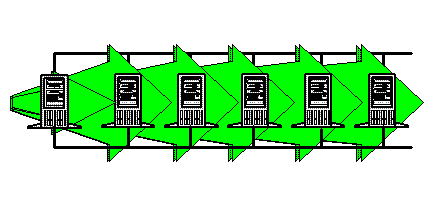
It has been said that a chief information officer's two greatest fears are system success and system failure. If a system fails, the CIO's staff is inundated with complaints. Conversely, if a system is successful, usage demands tend to outstrip the capacity of the system as it grows.
Clustering can greatly minimize system downtime. In addition, clustering can also help Information Technology (IT) departments design systems that can grow with the demands of an organization.
For example, billions of dollars have been poured into mutual funds companies in recent years. Although this type of growth is positive in financial terms, the technological burden of managing the corresponding information systems growth can be overwhelming. As a result, chief information officers and their staffs must develop systems that not only meet current system demand, but also provide for future system growth. Formerly, the system choices were rather limited: extremely expensive mainframes and minicomputers.
Windows NT Server clustering can provide a competitive advantage for the IT department. This technology allows faster system deployment, automatic re-tasking, and easier maintenance with smaller staffs—all while using inexpensive PC components. These components are available from multiple sources, which not only ensures competitive pricing, but also ensures parts availability. Consequently, IT departments can incrementally expand their hardware without the burden of single-supplier shortages.
Clustering technology also gives IT departments greater flexibility. Multiple servers can be tied together in one system, and additional servers can be integrated into the system as usage requirements dictate. Windows NT Server clustering gives a choice to system architects that they have never enjoyed before—availability and scalability on inexpensive, mainstream platforms.

Figure 3: For increased system performance, clusters will allow customers to scale their information systems incrementally, adding processing power as needed.